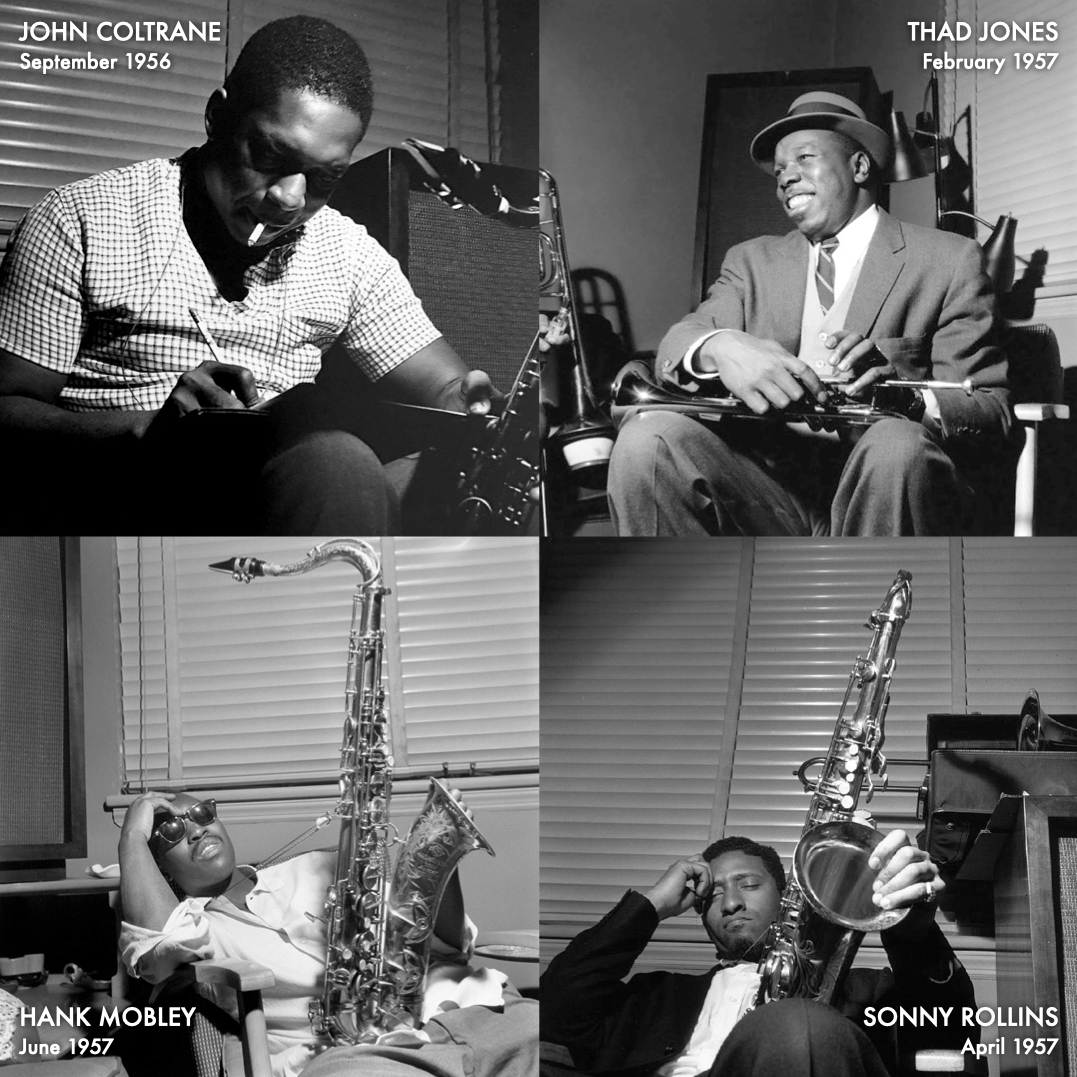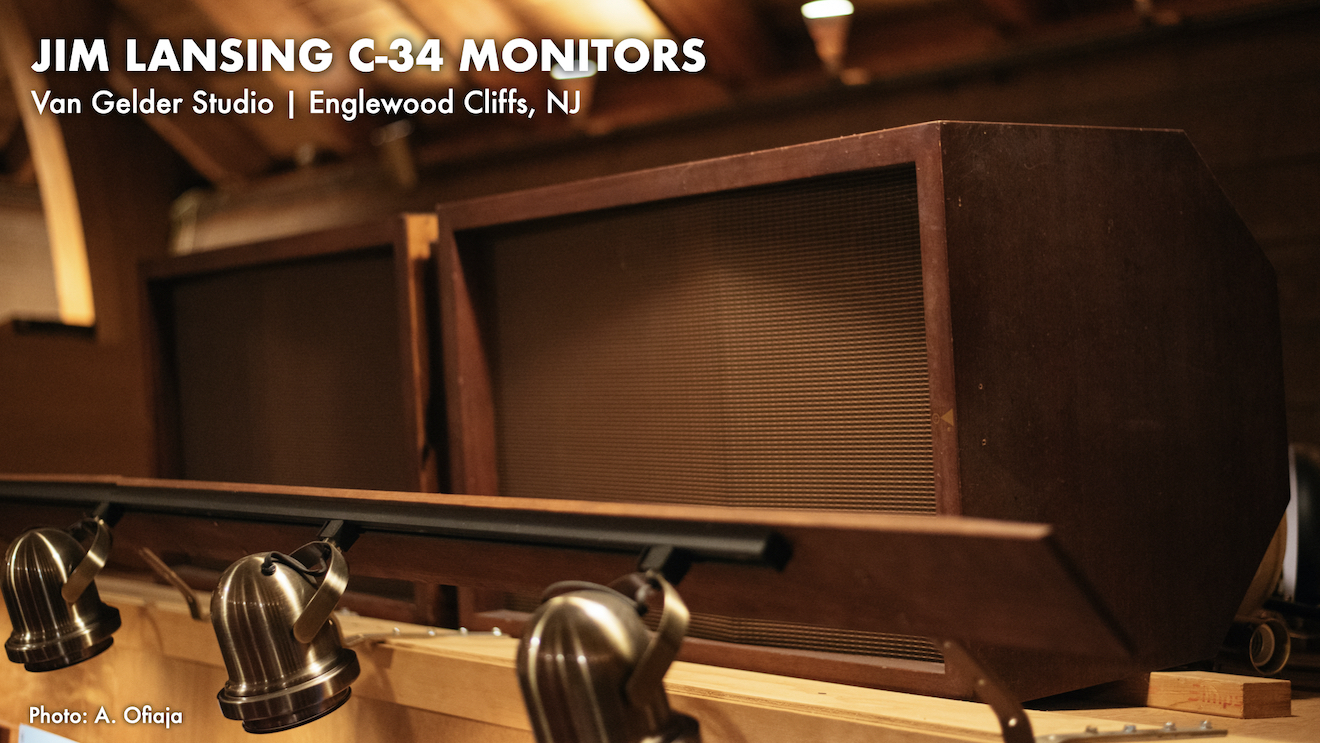| < Back | Outboard Gear | Keyboards | Next > |
| Outboard Gear < Back |
Keyboards Next > |
For monitoring the sounds he captured on tape in the 1950s and ‘60s, Rudy Van Gelder and the session producers would hear the playback of each take on massive 15-inch monitors. The Altec 604B can be seen in an Altec 612 cabinet in Van Gelder’s control room as early as 1953.
The Altec 604C then first appears in an Altec 606 cabinet around 1955.
In Hackensack, one speaker was in the control room, but the musicians needed to hear the music too, so Rudy set up a second Altec 604C monitor in the Hackensack living room so musicians could assess the quality of their performances.
Rudy continued to use these speakers in Englewood Cliffs, but there they were utilized as a stereo pair, both mounted at the end of the studio’s long, rectangular control room near the room’s entrance.
Introduced in 1954, the legendary 604C is a 15-inch coaxial design with a bass-reflex cabinet. It was capable of handling 35 watts RMS/50 peak, and its frequency response was 30-22k Hz, In 1954 the speaker was listed as $165 (about $1,500 in 2020).
Beginning in late 1956 we see photos of numerous famous jazz musicians sitting adjacent to a pair of large Jim Lansing (JBL) C-34 speakers in Van Gelder’s living room, listening intently to the music they had just laid to tape.
The C-34 enclosures were introduced in 1952 and have an RMS power rating of 25 watts. Rudy’s contain a 15-inch D130 woofer, a 175 DLH acoustical lens tweeter, and a 1.2 kHz N1200 crossover. At the time they costed $365 each (about $3,350 in 2020). As seen here, the speakers remain in the Englewood Cliffs live room to this day.
A pair of Altec 604E speakers enclosed in custom cabinets also sit in the Englewood Cliffs live room today.
While Rudy has explained that there were three monitors in the Englewood Cliffs control room in the 1960s — perhaps a pair for stereo and one for mono — he has also explained on more than one occasion that he never had stereo monitoring in the Hackensack control room despite recording to two-track tape there beginning in 1957 and cutting stereo lacquer disks there beginning in 1958 (Hovan, 1999; Cohen, 2010). If Van Gelder’s recollection is accurate, today we can only speculate how he was able to work with two-track tape and stereo mastering equipment without being able to monitor the process.
| < Back | Outboard Gear | Keyboards | Next > |
| Outboard Gear < Back |
Keyboards Next > |







